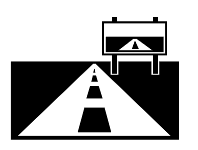Look here are some developers enjoying pizza at a previous event I organised.
Quickly becomes this:
I've even heard developers be described as people who turn pizza (& coffee) into code.
I was recently talking with someone who was organising a meetup but was complaining about the lack of signups.
"We're providing pizza, why haven't more people signed up?
They actually said that! As if people were coming for the food, and the technical talks, networking, socialising, and community building were all secondary.
Pizza isn't provided at evening meetups as a reason for people to come.
Pizza (or any other food) is provided at meetups, so people don't have to think (worry) about food or for it to be a reason for people not to come.
Pizza (or any other food or drink) isn't provided because of a concern for a lack of money to buy food. Developers are typically very well paid and able to afford to eat.
[Side Note. I have had people come to events were there were concerns about some people only coming for the food, but I certainly wasn't going to turn people away based on this assumption. People attend for myriad reasons that are more varied and complex than anyone can imagine. You don't know what's going on in everyone's life and even if you asked they may not want or be able to tell. Based on where and when these meetings were happening, there were other ways to get food if that's what they really needed but couldn't afford. Sitting through several hours of technical talks as a way to get a drink and a couple of slices of pizza is unlikely to be a good trade off for anyone not interested in the technology.]
It's about convenience.
Pizza (or other food) is provided so that those attending don't have to think about when or where they will eat and how it fits around event attendance. As event organizers, it's necessary to consider situations like:
- If this person is coming straight from work, will they have a chance to eat beforehand?
- If they have to wait until after to eat is hunger going to distract them during the event?
- If they go somewhere to eat first, could they end up getting distracted and not come?
If a full day event and people leave at lunchtime to find food, there's a high chance that some of them won't come back in the afternoon.
Then there are events deliberately intended to fit around when people are eating. A breakfast or lunch time event would have to be much shorter if it also needed to allow time for attendees to also find food. The potential for missing a meal may also put off some attendees.
There's also a social benefit to sharing a meal (or even just a drink) with other people. With so many meetups calling themselves communities, it's great to be able to develop relationships between people based on more than a shared interest and location. Eating together can be a social lubricant to help start building relationships.
There are a lot of reasons and thought that go into providing food for developers at events and it's not about saving money or appealing to people through food.
Over the years, I've personally spent thousands buying pizza, other food, and drinks to help enable events to run smoothly. Only on a couple of occasions at smaller events did we experiment with asking for contributions. Being well paid at the time, this wasn't an issue. I expect that the majority of people reading this are people working in the software development industry who are well paid and never need to worry about being able to afford to pay for a meal.
But that's not the situation for everyone.
Food insecurity is a massive and growing problem and it's hard to imagine you can make a difference.
However, if you're in a position where you're well paid and you've ever been to an event where food was provided, please consider making a donation to Bankuet!
Bankuet is a social impact company who "make it easier to give to food banks."
They maximize donations by letting food banks request the items they most need and then buy in bulk so that your donation goes further and waste is minimized.
You can either donate to a food bank in your area or make a general donation to where the need is currently greatest.
Please join me in supporting the excellent work they're doing.
https://www.bankuet.co.uk/givenow















